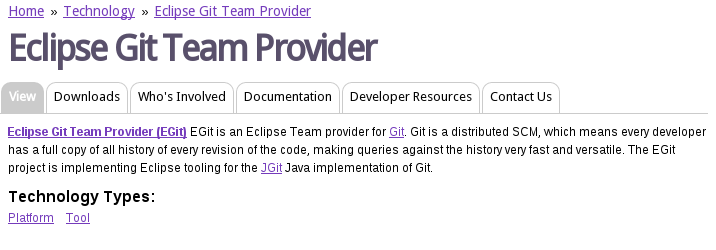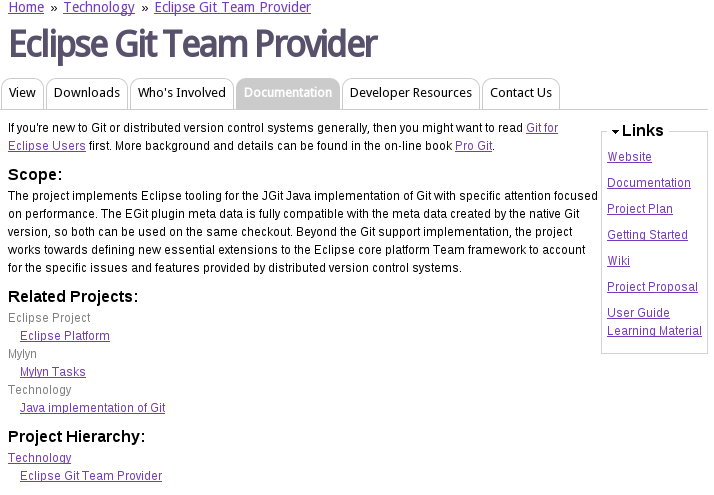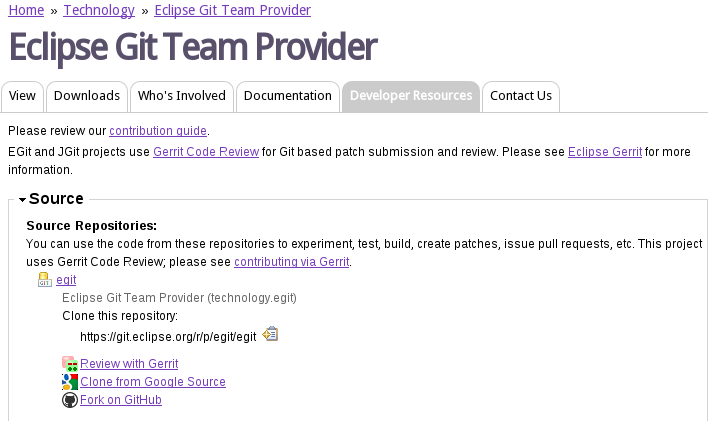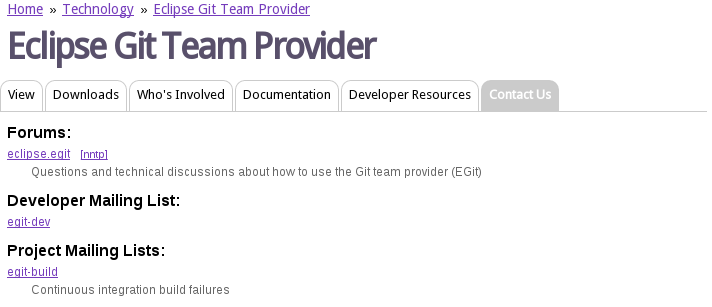PMI Facelift
The Project Management Infrastructure (PMI) is still, frankly, a little too ugly for my liking. A proper facelift with the help of a graphics designer and somebody who knows a thing or two about designing websites is still required (and planned). Having said that, we’re taking a small step forward.
Over the weekend, I will release an update to the look and feel of the PMI. This will address a couple of deficiencies that have been bothering me for a while. Perhaps the biggest problem with the existing implementation is that it is impossible to provide reasonable links to a particular page. The implementation detail that causes that deficiency is also responsible for the rather odd “go back” functionality which not-so-very-helpfully switches you to the main page when you navigate back to a project page. With this change, go back will return you back to where you came from.
The “Discover”, “Engage”, “Participate”, and “Explore” tabs will disappear in favour tabs labelled “View”, “Downloads”, “Who’s Involved”, “Documentation”, “Developer Resources”, and “Contact Us”. If you’re logged in as a project committer, you also see an “Edit” tab (you may also see a “Revisions” tab).
The “View” page is the default page for project information. On this page, you’ll see the project description, logo, and some other basic project information (the project’s lifetime commits chart will also appear here).
Providing a good project description is a great way to help a potential new recruit for your community understand the nature of the project. A short paragraph of two-to-five sentences works great here. If you do feel a need to provide a more lengthy description, note that there is a means of providing a summary; use that functionality.
The “Downloads” page shows, well…, downloads. You can provide helpful free-form text download information at the top of this page, as well as collection of links.
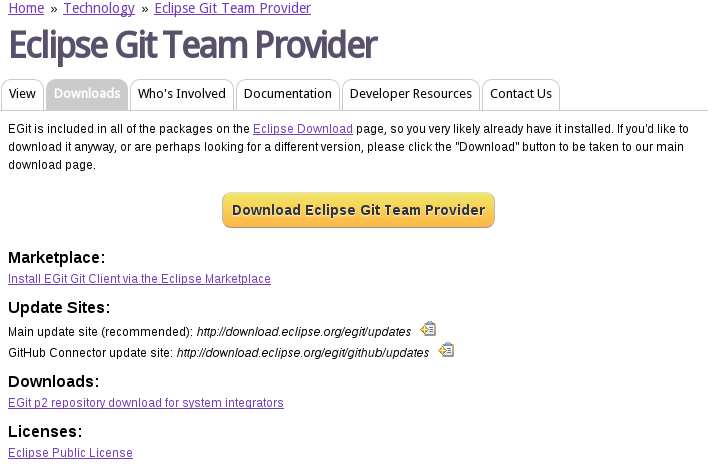
Included with the links is the “Big Button Download” (“Downloads URL”). You can provide anything you want here; either a direct link to a file download, or a link to a page with more download options. Marketplace, Update site, and arbitrary download-related links can also be provided.
The “Who’s Involved” page lists the people involved in the project, including project leads, committers, and mentors. For top-level projects, you’ll also see PMC members and council representatives.
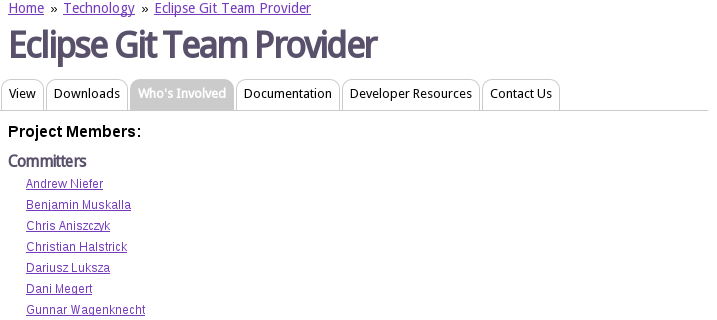
Generation of “Who’s Involved” page is completely automatic based on our database’s understanding of the composition of the project team. At some point in the not-too-distant-future, we’ll include company information on this page (see bug 403494).
The “Documentation” page, like the “Downloads” page starts with a free-form text field that projects can use to include whatever sort of information makes sense.
This page also includes the project scope, related projects, activity charts, tables of releases and reviews, and links. Note that the project scope contents can be changed by any project committer: tweaking the text is okay, but if the meaning of the scope needs to change, you must engage in a Restructuring Review.
The “Developer Resources” page is where potential contributors and adopters find the source code and build information for your project. Again, you can provide a bit of free-form text as you see fit to best help the reader understand something that may need a bit more explanation. A summary of the the project’s contribution guidelines, along with a pointer to more information might be helpful, for example.
The Source and Build information is collected into collapsible sections; some projects list a lot of repositories, so providing a means of quickly collapsing them seemed prudent.
Finally, the “Contact” page provide pointers to the project’s forums, and mailing lists.
After the rollout, I expect to make additional tweaks based on feedback (and update the documentation).
Also included with this release, are some similar changes for release records, new form-based support for providing project proposals, and project lead election workflow.
As always, your feedback is welcome. Naturally, bug reports are the best way to provide feedback.

